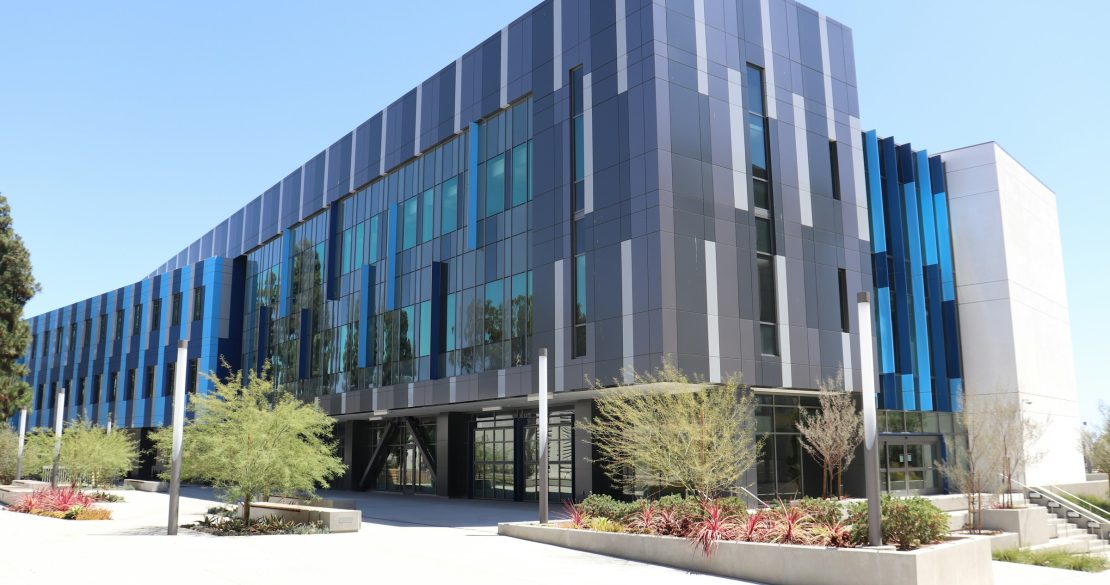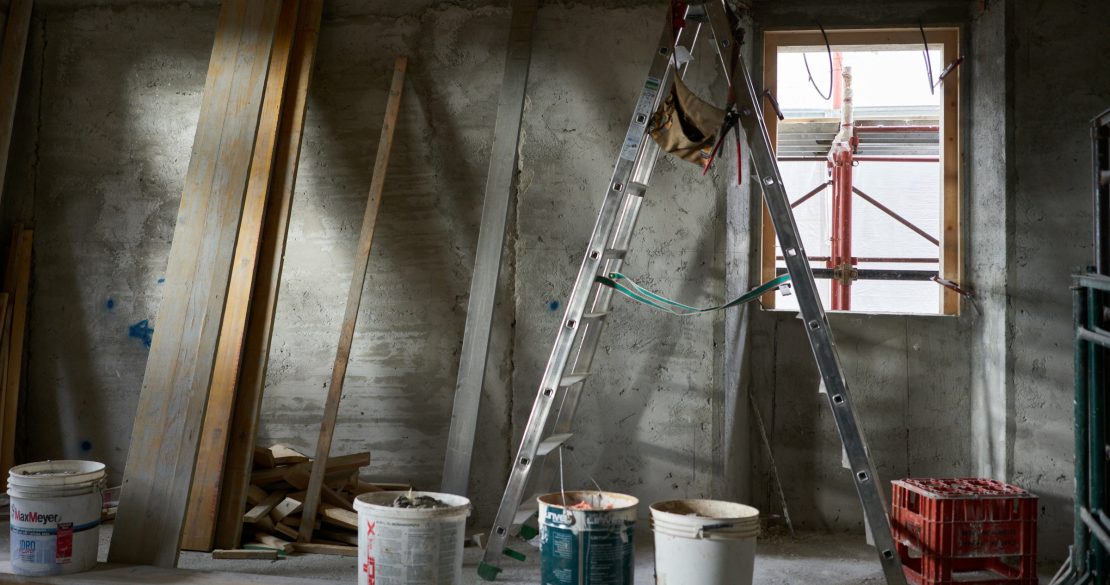Sustainability. In today’s world, it’s a must whenever possible. Re-usable shopping bags, recycling materials including paper, plastic, metal, and glass when able, and using items made of recycled materials are just a couple things everybody can do to make the world a “greener” place. Companies proudly tout their sustainability practices with things like “this uniform piece made with 100% recycled materials” and recycling stations for plastic bags that give a count of how many bags have been recycled there.
Similarly, construction company websites offer insight into that company’s sustainability practices, including materials and methods used and how they reduce a project’s environmental impact. Sustainability is a hot and ever-changing topic in the construction industry, with the continued discussion on improving materials and methods in pursuit of net-zero building emissions.
Table of Contents
What is Sustainability in Construction?
Why is Sustainability in Construction Important?
Benefits of Sustainable Construction
Environmental Benefits
Social Benefits
Financial Benefits
Challenges Within Sustainable Construction
How to Achieve Sustainability in Construction
Sustainable Materials
Renewable Energy on Construction Sites
Final Thoughts
What is Sustainability in Construction?
Sustainability in construction is the practice of designing, constructing, and operating buildings with a focus on minimizing environmental impact and maximizing social and economic benefits. Sustainable construction’s primary goal is to minimize the depletion of natural resources, reduce greenhouse gas emissions, and promote the well-being of a building’s occupants as well as the surrounding community.
The execution of sustainability in construction includes the use of eco-friendly materials, the implementation of energy-efficient systems, a reduction in waste generation, and the creation of healthy indoor environments.
These factors mean sustainable construction plays a vital role in today’s construction projects, as well as the designs of contemporary buildings.
Why is Sustainability Important in Construction?
Sustainability in construction is important in much that same way that sustainability is important in other industries and aspects of our lives. Reducing the impact to the environment during the building process will have you reaping long-term benefits that non-sustainable practices don’t offer.
An overall guarantee of long-term benefits is enough for some, but let’s look at some of the numbers. The construction industry makes up:
– Nearly 25% of air pollution
– 30% of global raw materials
– 36% of global energy use
– 40% of total CO2 emissions
– 40% of solid waste generation
– 40% of drinking water pollution
Sustainability in construction helps improve these numbers, but is also crucial for the long-term economic benefits and social prosperity of any given community. When developers adopt sustainable construction practices, great things happen. Operational costs go down, structure lifespan increases, and property values also take a jump. Well-being and productivity of a building’s occupants also receive a boost as the sustainable building methods lead to healthier living and working environments. Quality of life measurements increase, and local economies even get stronger. As urban populations grow, so will the demand for sustainable construction, making sustainable construction a key strategy in addressing today’s pressing challenges including climate change, resource scarcity, and social inequality.
Benefits of Sustainable Construction
There are many benefits to sustainable construction that reach far and wide. Some of the most important to businesses and building owners today include:
Environmental Benefits
When most people think of sustainability, they think of the environment. By applying sustainable practices in the construction industry, you can create far-reaching and long-last effects. When you prioritize eco-friendly building materials and practices, you help preserve ecosystems, conserve natural resources, and reduce energy consumption. This leads to lower greenhouse gas emissions, as well as a lower carbon footprint for the built environment. Another plus: green construction methods may contribute to improved water management, waste reduction, and the promotion of biodiversity in the area.
Social Benefits
Industrial waste can be a big problem. Accidents happen, but then people protest outside headquarters – demanding safer practices, less waste, and the use of more environmentally-friendly materials to keep the accident from happening again. Through Corporate Social Responsibility (CSR), your business can take responsibility for the economic, environmental, and social impact their project makes on a community. Making such a commitment from the outset of a project allows developers to demonstrate their will to stick to sustainable development and create a positive public image for themselves going forward.
Sustainable buildings are designed from the ground up in a way that causes as little impact as possible on the environment. They’re also built to promote issues like healthier indoor environments with increased natural light, better air quality, and access to open green spaces. Such elements have been shown to contribute to improved physical and mental health for a building’s occupants, thus leading to higher productivity and overall satisfaction.
A business can add social value to their projects by using sustainable construction practices. This includes focusing on locally-sourced materials and labor – a move that bolsters local economies as well as the local job market with more opportunities to find work.
Financial Benefits
You don’t want to light your money on fire! With sustainable building practices and materials still being a little more costly up front, building owners see the project’s bottom line and shed a tear. While it may hit them in the wallet while the building is under construction, implementing sustainability in the project now will turn into long-term gains down the road. Using sustainable building materials and practices now means your building’s future includes:
– reduced energy consumption
– reduced water consumption
– reduced maintenance expenditures
– higher market value (attractive investment for stakeholders)
– advantage over competitors who have not yet embraced eco-friendly practices as the demand for green buildings increases

Challenges Within Sustainable Construction
As mentioned in the previous section, one of the barriers to implementation of sustainability in construction is cost. Currently, many sustainable building materials come at a premium price. A firm’s budget for any given project greatly influences the choices made every step of the way, from lot selection to building materials used. We could throw statistic after statistic at you all day, but the bottom line is this: despite the up-front cost, the demand for sustainable building practices continues to grow.
Not all regions or municipalities have boarded the sustainable construction bandwagon. Those that have offer incentives and flexible regulations that encourage sustainable material use. Without the support of the community around it, a developer wanting to build sustainably can run into many road blocks.
Additionally, your sustainable construction project requires extensive collaboration and coordination between a number of stakeholders, making the tasks of planning and execution complex and time-consuming.
To overcome these challenges and build your sustainable project, you’ll need to increase awareness, investment, and rally for more policy support in an effort to drive a shift toward a more sustainable construction industry, not just in your area but across the globe.
How to Achieve Sustainability in Construction
You may be defeated reading about the many barriers there are to using sustainability in construction, but with time and diligence it can be done. As technology advances in the construction industry and more sustainable alternatives become more widely available, the cost for greener building becomes more affordable.
Some steps you can take to overcome the barriers and create more sustainable building projects include:
Sustainable Materials
Your mind may go straight to the kinds of sustainable materials you can use in your next build. It is, after all, the biggest step you can take toward making your next construction project more sustainable. Utilizing sustainable materials like responsibly sourced wood, sustainable concrete, and alternative materials like blocks made of mud, wool insulation, recycled materials, and more, developers can significantly reduce the environmental impact of a project.

Such products often have lower embodied energy as well, meaning fewer resources and emissions are involved in the production, transportation, and disposal of materials. Another plus: sustainable materials are typically more durable and require less overall maintenance, resulting in an extended lifespan for buildings and a reduction in waste generation.

When you integrate sustainable materials into your next construction project, you’ll not only contribute to a greener built environment, but also do your part to promote a more circular economy in which resources are preserved and reused time and again to their maximum potentials.

Check out our article on the different types of sustainable building materials you can use for both exterior and interior features of your build, then book a consult to discuss how to best utilize each in your project.
Renewable Energy on Construction Sites
You may have already planned to use renewable and sustainable energy sources for your completed building, but consider a more sustainable building process and harness these technologies during your build as well. Taking advantage of solar, wind, and geothermal energy both during and after the construction process can significantly reduce reliance on fossil fuels, thus lowering greenhouse gas emissions and the environmental impact of each new construction project.
The use of renewable energy technologies including solar panels, geothermal systems, and wind turbines on your construction site has benefits like powering heavy machinery, tools, and site lighting at a substantial energy savings. As previously mentioned, carrying these systems into the new building adds to the sustainability, long-term energy-efficiency, and reduced carbon footprint of the finished building.

The push toward cleaner energy transitions throughout the world indicates no sign of stopping anytime soon, so embracing these renewable energy practices in your construction projects is a vital step to achieving sustainability and doing your part to mitigate climate change and other environmental concerns.
Final Thoughts
The green sustainable building movement has lasted for decades so far, and has only picked up steam over time. Integrating sustainability both in materials and practice at your construction sites is a must for survival into the future.
Structr Group can help you plan your next moves when it comes to adding sustainable features and practices into your building projects. We’ll help guide you through the sustainable building process and help you make the best decisions for your next project.
Contact us today!








